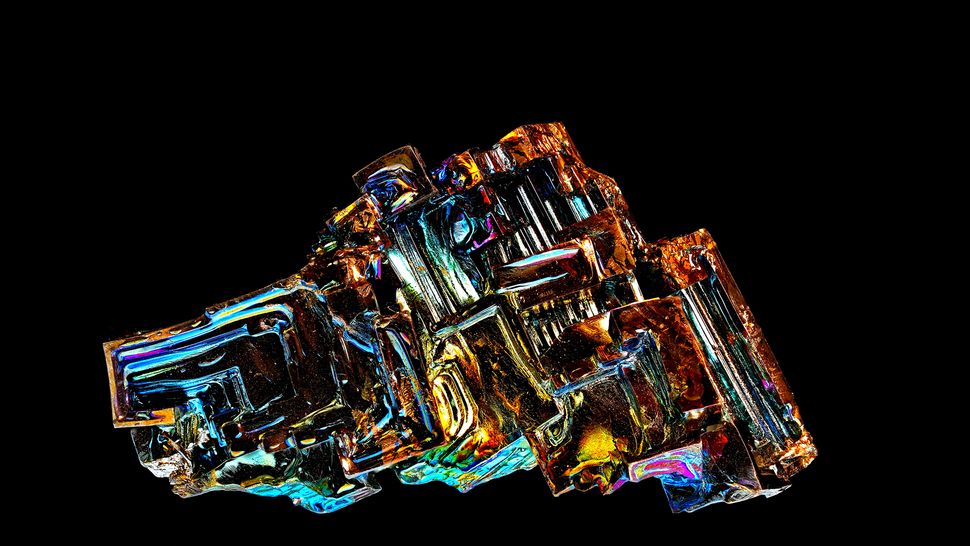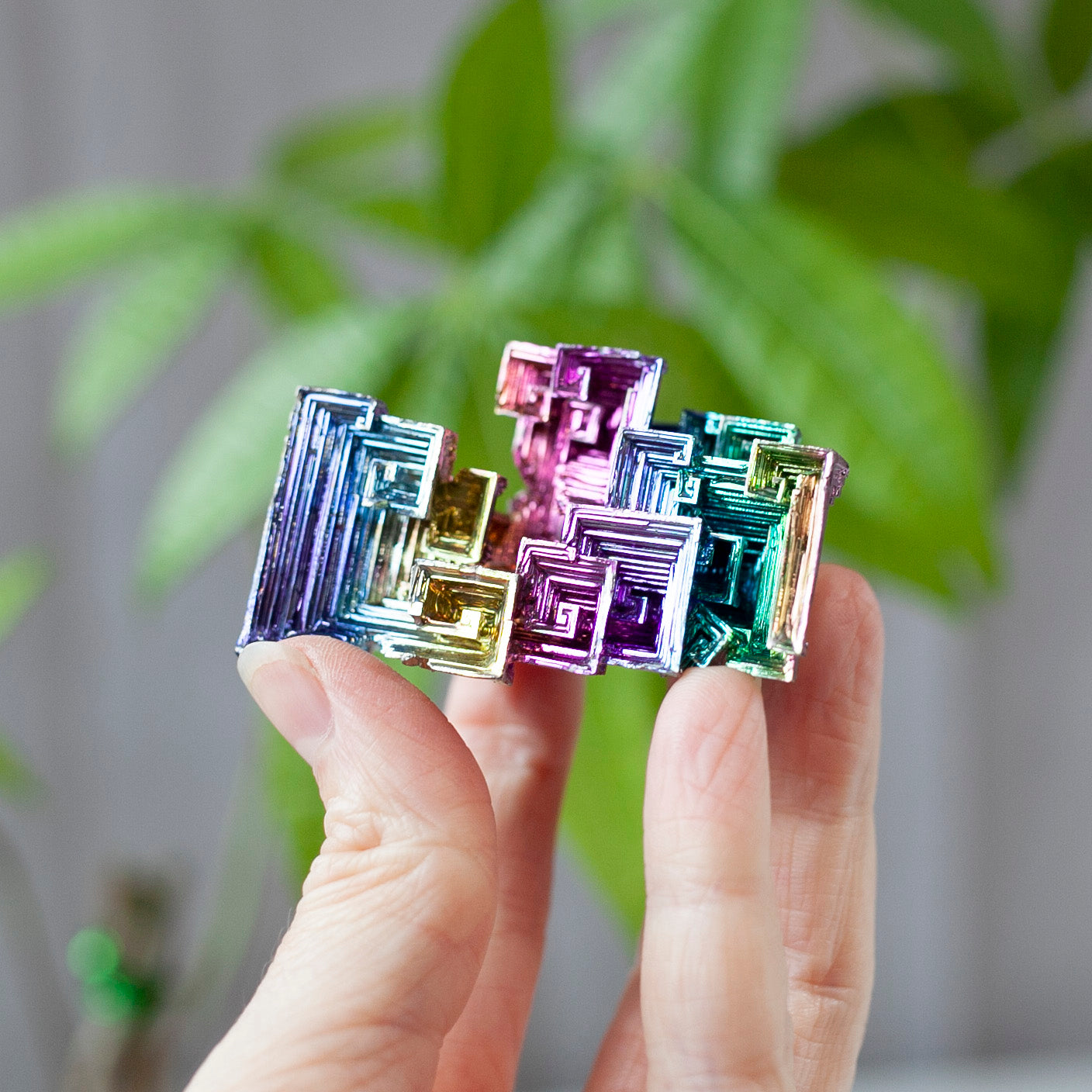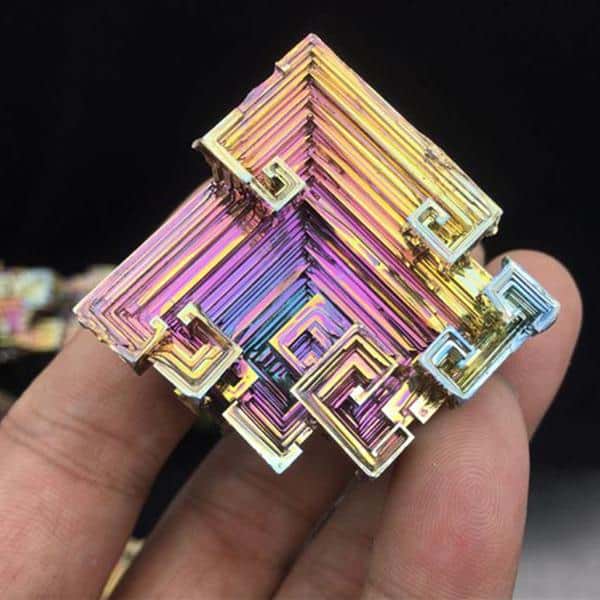Science
Related: About this forumBismuth is so strongly repelled from magnets, it levitates. How?
By Victoria Atkinson
published March 23, 2024
The element bismuth can "float" between magnets due to magnetic levitation. What's the science behind this phenomenon?

Mineral bismuth close-up, full size image above 4K.
Bismuth is an iridescent metal that can seemingly float between two magnets, a phenomenon known as "magnetic levitation." (Image credit: ProteanVisuals via Getty Images)
Bismuth is an unusual element that we don't encounter much in everyday life. But this pretty, iridescent metal, found near the bottom of the periodic table, exhibits some extraordinary properties. Magnetic levitation — bismuth's ability to seemingly float between two magnets — is perhaps one of the most interesting. The repulsion between bismuth and the magnets is so strong, it causes the metal to levitate.
But why is bismuth so strongly repelled from magnets?
According to Eric Riesel, a magnetic materials chemist at MIT, the answer comes down to the type of magnetism exhibited by bismuth. Every material has magnetic properties, determined by a quantum property of the element's electrons known as spin. But, this spin can only point in two directions — up or down — and the combination of all the spins in a material define exactly what type of magnetism the element will exhibit.
"Most people are familiar with ferromagnets (permanent magnets) like iron, where the spins are all aligned with each other, but there are also anti-ferromagnets where the spins are pointed in opposite directions to each other," Riesel told Live Science.
However, there's also another pair of magnetic categories: paramagnetism and diamagnetism. "In paramagnets, when you apply a magnetic field, spins in that material will align with the field in proportion to its strength," he said. "Diamagnets apply a force in the opposite direction to the field, repelling it."
More:
https://www.livescience.com/chemistry/bismuth-is-so-strongly-repelled-from-magnets-it-levitates-how



Mind your own Bismuth.
duncang
(3,767 posts)When near a AC powered coil. I helped my daughter do a science project with it. Using a switch, 110 vac coil and iron core with a rod in it. Then the bottom of an aluminum can with a hole that fit loosely on the rod. It lifted the disc about an inch. If it had a stronger coil it would have been higher.
sl8
(16,962 posts)The AC electromagnet induces current in the aluminum (or copper, silver, etc.) ring, whose accompanying magnetic field is in opposition to that of the original electromagnet.
Igel
(37,252 posts)when we start E&M--it doesn't happen often, but they stare and try to sort out what the "trick" is. It's right at the end of the course.
Then we do the formal physics and they pull out their hair. (It's high school, AP Physics C: E&M. Don't always have enough students--or, apparently, this year, budget--to have the class.)